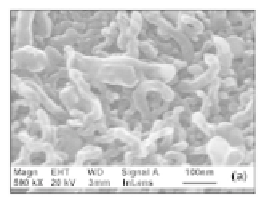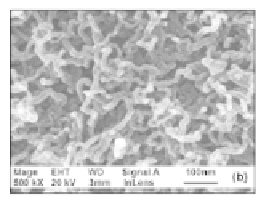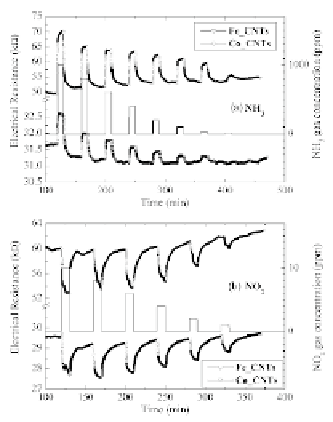Biomedical Engineering Reference
In-Depth Information
. [160] reported simultaneous conductance and
capacitance measurements on a pristine CVD-grown SWCNT
network used to extract an intrinsic property of the molecular
adsorbates of acetone, ammonia, dimethyl-methyl-phosphonate
(DMMP), and dimethyl phosphite (DMP). The adsorbates produced
a rapid response in both the capacitance and the conductance of the
SWCNT network. The responses were caused by a combination of
two distinct physiochemical properties of the adsorbates: charge
transfer and polarizability. The authors claimed that the ratio of the
conductance response to the capacitance response is a concentration-
independent intrinsic property of a chemical vapor that can assist in
its identification.
Snow
et al
Figure 9.13
SEM images of the MWCNT films grown by RF-PECVD using
a 3-nm thick growth catalyst of (a
) Fe and (b) Co. Time
responses of the chemiresistor based on Fe- and Co-grown
RF-PECVD MWCNT films toward (a) NH
∆
gases,
at a working temperature of 200°C. The MWCNT thickness is
300 nm and the nominal thickness of the growth catalysts of
Fe and Co is 3 nm. This figure is reprinted with permission
from AIP [30].
and (b) NO
3
2
Pristine MWCNT films were deposited by Penza
. [30] using
plasma-enhanced chemical vapor deposition (PECVD) system onto
Cr-Au patterned alumina substrates for NO
et al
(1-10 ppm) and NH
2
3





